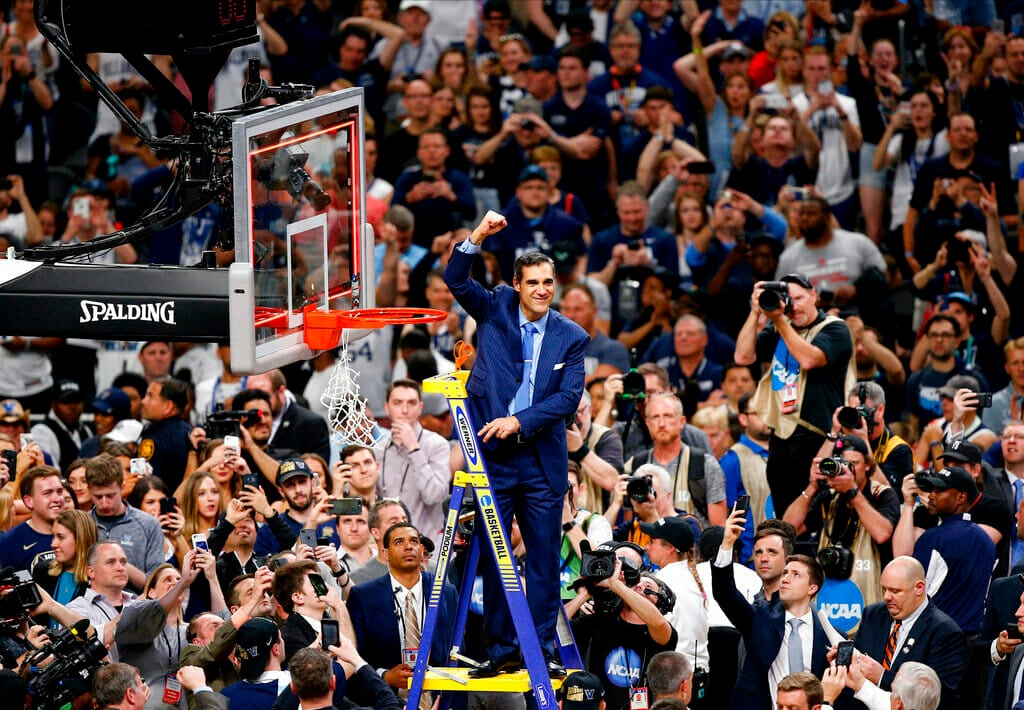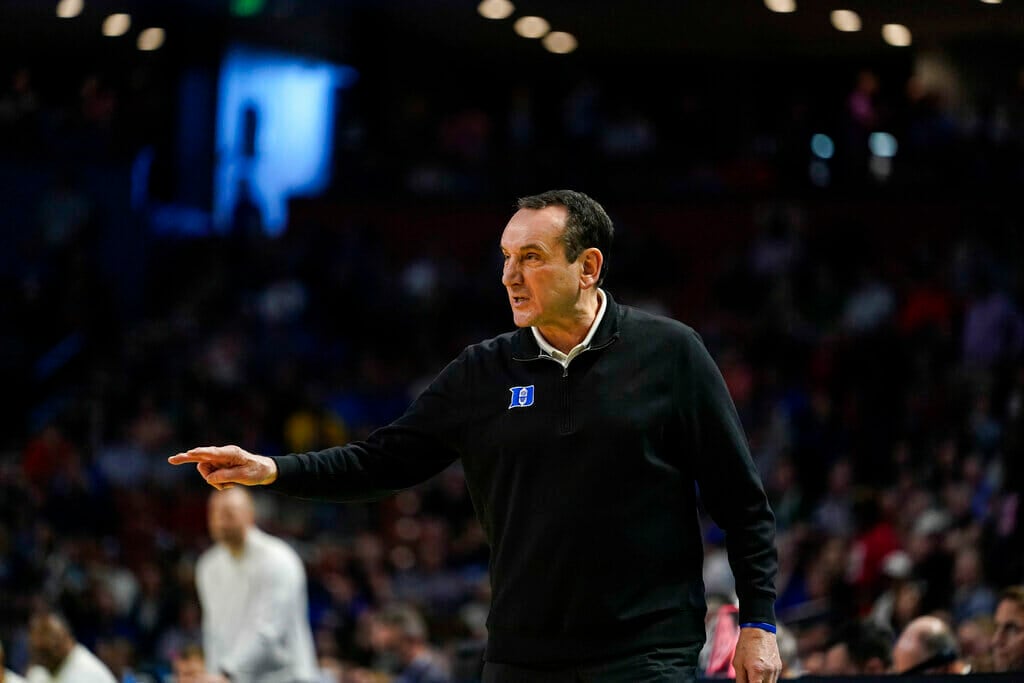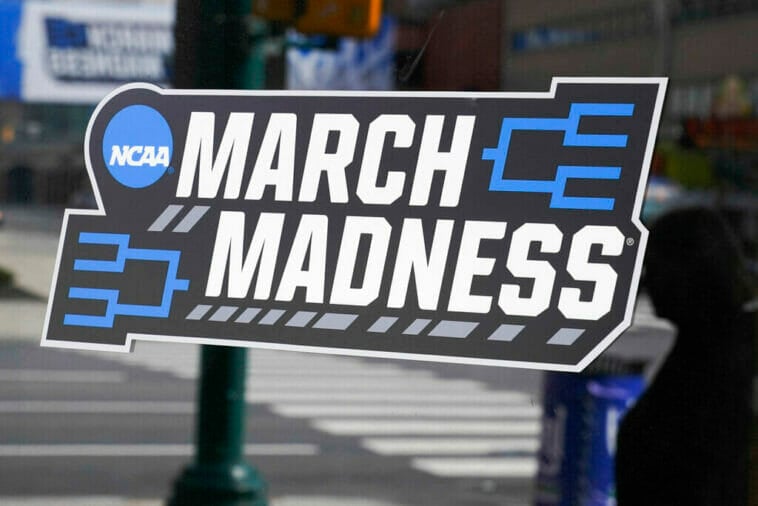March Madness may not be a well-known competition on the Latin continent, but that doesn’t mean that it is not an incredible sporting spectacle in every way. As it is one of the most important events in the United States and the world of betting, we provide you with all the basic and historical information about the event: what is it, its beginnings, its maximum exponents, and its culture. Here’s everything you need to know about the NCAA Finals in the world of basketball.

What is March Madness?
March MAdness is a knockout tournament organized by the NCAA, where the best universities from around the country compete against each other to be crowned as the best team and college basketball program of the entire season. Usually, the competition takes place during March and April, which occupy the beginning of Spring in the United States and coincides with the Spring Break.
It is important to clarify that the tournament is planned to take place in different cities, all designated in advance and in “neutral” arenas/stadiums (however, there have been cases in which the local team reached a certain stage of the tournament that was held in their city).
When and How Did March Madness Come about?
Its beginning dates back to 1939, it emerged as an idea of the coach of Ohio State University, Harold Olsen, and since then it has been played in every year (except 2020, when it got canceled after the COVID-19 pandemic). The tournament became one of the most important events in North American sports, attracting thousands of fans to the stadiums and millions of spectators to enjoy each game that is held.
Why Is It Called ”March Madness”?
This is a term that originally came out of a High School Association referee in Illinois, H. Ⅴ. Porter, who used it to describe basketball tournaments in the area from 1939 to 1942. The term became popular in this same area over the years, with pieces written dedicated to the name March Madness even though it was only the Secondary Tournament Scene of Illinois.
Its definitive expansion occurred from the 1980s thanks to the fact that a panelist of the CBS network, Brent Musburger, who worked many years in the city of Chicago, began to relate it to the NCAA tournament in its broadcasts. The NCAA, however, gave the credit for initiating the official March Madness celebration to Bob Walsh of the Seattle City Organizing Committee in 1984.

How Many Teams Participate in March Madness?
Originally in the first tournament organized by the NCAA, the number of teams began with only eight universities and expanded over the years: 16 teams in 1951, 32 in 1975, 64 in 1985, and finally with the inclusion of the First Four (a preliminary tournament to define the last four places of the tournament) in 2011, the total number of teams participating in March Madness every year is 68.
The stages of the championship are defined as follows: the First Four is the “unofficial” debut of the competition, then there is a first round of 64 teams, a second round with 32 teams, and then there is the Sweet 16 (the regional semi-finals), followed by the Elite 8 (the regional finals), culminating in this way with the Final Four (the national semi-finals) and the national championship (the match where it is played) for the NCAA title.
What are Brackets?
Brackets are the structures or trees that the tournament will follow as it progresses. The NCAA uses Selection Sunday (Selection Monday in the case of the women’s tournament), an exclusive day to publicize the positions or “seeds” of each team participating in the tournament just before its start, and thus generate the matches that can occur at each stage of the competition within the respective regions of each group of teams (West, East, South, and Midwest).
The creation and prediction in the brackets has become a unique tradition of March Madness, where millions of people after Selection Sunday assemble their predictions through the format and guess the winners of each match until they reach what would be the winning university of the tournament. The excitement caused by the competition is so that it has been reported on multiple occasions, a large number of rests, medical leave and even planned vasectomies during the period in which March Madness is celebrated all just to witness as a spectator.
Predicting a bracket is not an easy task at all: according to statistics by specialists, the chances of having a 100% correct bracket are lower than the chances of winning the lottery, being hit by lightning, or winning a presidential election. Numerically, the odds are one at 9,000,000,000,000,000,000 (nine quintillion) approximately. At JefeBet we have a bracket that you can use to predict what is left of the competition this year.
Who Was the First Team to Win a March Madness?
The first team in history to win the tournament was the University of Oregon against Ohio State University in 1939, by a score of 46-33, when only eight teams participated in the entire event.

Who Is the Top Participant and Top Winner in March Madness?
The team with the most appearances in the final NCAA tournament is the University of Kentucky, with 59 appearances since 1942, while the team with the longest streak currently of consecutive participations is the University of Kansas, which has from 1990 to the present participated in March Madness (a total of 32 consecutive years).
As for the top winner, UCLA is the team with the most titles in the history of the competition, with 11 trophies in total, seven of which were consecutive (1967 to 1973), and their last victory was in 1995.
Who Is the Top Scorer in March Madness History?
Christian Laettner, Duke University’s intern, scored a total of 407 points in 23 games played from 1989 to 1992 to become the leading scorer in tournament history. As a result, he finished with two championships (1991 and 1992) along with an average of 17.7 lifetime points at March Madness.
Who Scored the Most in a March Madness Match?
The guard Austin Carr of the University of Notre Dame, occupies three of the top five positions in the ranking of most points in a game in the history of March Madness: the fifth and fourth place with performances of 52 points against TCU (1971) and Kentucky (1970), and last but not least, the first place is also his with a total of 61 points against the University of Ohio in the year 1970.
Who Is the Coach with the Most Championships and Wins at March Madness?
The head coach with the most championships is John Wooden, who led UCLA in what was the most successful stage in the history of the university and perhaps of any team in the history of the competition: he led the team to achieve 10 titles in a period of 12 years.
Second on the list, he is the record holder with the most wins in the tournament, and is still active today in what will be his final year as a college professional strategist: Mike Krzyzewski, better known as Coach K. Currently he has 99 victories in the final phase of the tournament and has won a total of five titles with Duke University. This Thursday, March 24, they will face Texas Tech University for what would be their 100th victory and the pass to Elite 8 2022.

What Is an Upset?
“Upset” is the term used when a team from a lower ranking/seed defeats a team with a much higher ranking. Usually the most unexpected upsets occur between teams below the tenth position in each region. When a low-ranked team makes it past the first rounds of the competition and manages to get into the Sweet 16 or even the Elite 8, it is called ”Cinderella”, or translated into Spanish “equipo Cenicienta”, because of the few odds such a squad had of advancing so far into the tournament.
Which Was the Biggest Upset in the History of March Madness?
It happened very recently: the only time a #16 seed (the lowest position in the entire bracket) has defeated a #1 seed was in 2018 when the University of Maryland Baltimore County, better known as UMBC, defeated the University of Virginia in the first round of March Madness by a score of 74-54. Prior to this event, all teams seeded as first in the competition had a 135-0 record before UMBC’s victory.
The team with the lowest seed number to win the national championship has been Villanova University, being the eighth ranked of the competition in 1975.

Which Was the Biggest Comeback in the History of March Madness?
In the 2011 tournament, the University of Maryland defeated Duke University by a score of 39-17 in the first half at 6:37 of the first half. The Dukes ended up defeating Maryland by a score of 94-84, completing the 22-point comeback and the largest in NCAA history. On the other hand, Duke University also lost an 18-point lead to Seton Hall University in 1989. This is the second place for the biggest comeback in the history of the competition.





